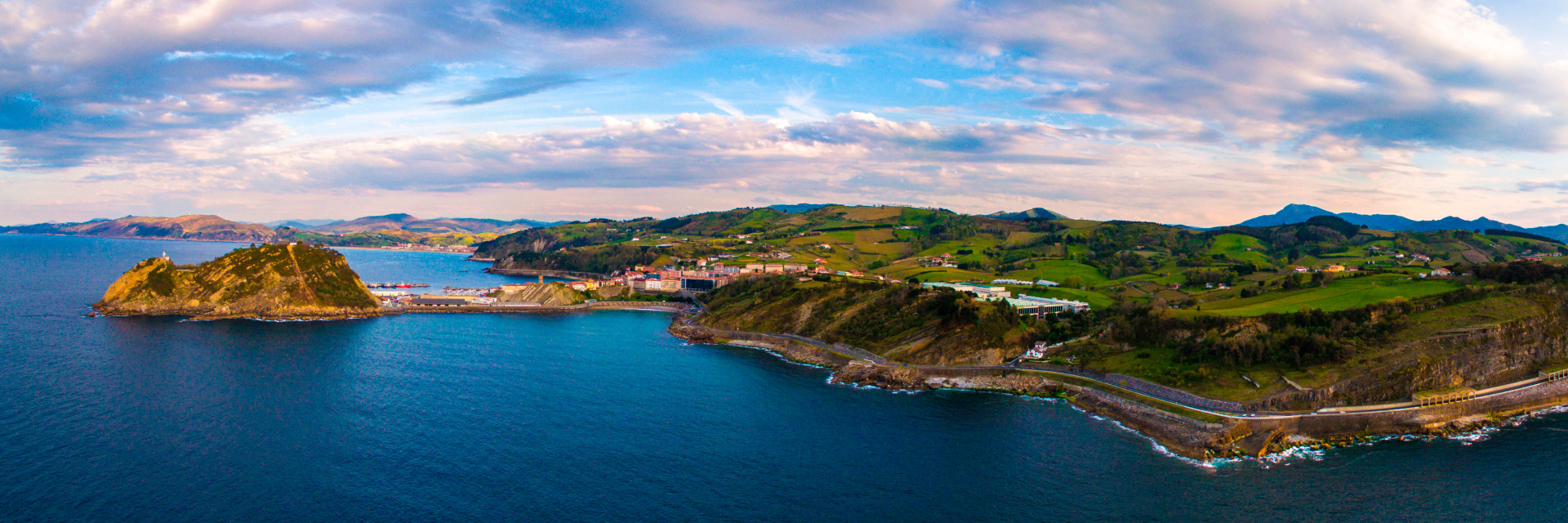
Getaria
Getaria is a coastal town, known mainly for being the birthplace of the sailor Juan Sebastián Elkano, the first man to sail around the world. It is a popular tourist destination in the Basque Country. It is famous for its restaurants that prepare grilled fish and the white wine with denomination of origin that is grown nearby, known as Txakolí de Getaria.

The municipality of Getaria occupies a stretch of the central coast of Gipuzkoa, on the shores of the Cantabrian Sea. This stretch is made up of a steep cornice on which, however, a series of inlets and points have formed as a result of erosion. The old town of Getaria is located on the tombolo that links the mainland with the Monte de San Antón, which until the 16th century was an island. The town covers the difference in level between the cornice and the tombolo at sea level, where the port is located. The silhouette of Mount San Antón resembles a mouse, forming the tombolo and the town of Getaria its tail. This is why Mount San Antón is better known by the nickname of El Ratón de Getaria, which forms one of the most common postcards in the whole of Gipuzkoa.
Its urban plan is rectangular with parallel longitudinal and transversal streets. The unevenness has to be overcome with stairs and steep slopes. Originally, the complex was walled and turreted, although these elements have almost disappeared nowadays. An eye-catching and well-known passageway that runs under the church of San Salvador and connects the Calle Mayor (Kale Nagusia) with the stairs leading to the port. This passageway is called Katrapona and is a vestige of the old defences.
History

1
The first traces of human occupation in Getaria date back to the Bronze Age and are related to the pastoral culture of that time. It was with Rome when, through its geographers, Getaria began to enter history. There are indications that a Roman settlement was located at that time, probably the one mentioned by various authors as Menosca.
2
The history of Getaria dates back to an undetermined date. This imprecision is due to the loss of the document that gave rise to the town, the "fuero" (charter). Its creator was King Sancho VI of Navarre, who, towards the end of the 12th century, granted it to the inhabitants of the coastal enclave. In the following years, Getaria underwent a radical political change. Alfonso VIII of Castile conquered Getaria in 1200 and hastened to confirm its charter (1209).
3
An important event in the history of the town took place in 1397, when the Brotherhood of Guipúzcoa, the seed of the current Historical Territory, was established in the church of San Salvador. Getaria, an important trading and fishing port since the Middle Ages, has been burnt and destroyed several times. In 1628, an important naval battle was fought in its bay between the French and Spanish squadrons, the latter being destroyed and the town was left in ruins.
4
During the War of Independence, in November 1811, Getaria was taken by French troops, who abandoned it in 1813, but not before causing serious damage.
Getaria's seafaring vocation has been a tradition in Getaria. For hundreds of years, whaling was of great importance to the town's economy. In fact, the whale has historically been the main motif of its coats of arms.

 Español
Español Euskera
Euskera Français
Français